|
Medium - Tomas Pueyo How Any Country Can Learn to Dance and Stop the Coronavirus You’d imagine eight months into the pandemic most countries would know exactly what to do to stop the coronavirus. And yet here we are. You’ve probably seen charts like this one by now. The detail few add is the green line at the bottom, with Asia-Pacific countries. This is a myth-busting graph. Japan, Taiwan, China, Hong Kong, Singapore, South Korea, New Zealand, Australia, Mongolia, Thailand or Vietnam all followed different variants of the Hammer (heavy lockdowns when there’s an uncontrolled outbreak and they don’t know what to do) and the Dance (a series of intelligent measures to keep infections low), yet all have been successful. This list includes all types of countries: democratic, authoritarian, continental, islandic, freedom-loving, Anglo-Saxon, developing, developed… They prove any country can succeed. And they’re not the only ones: From the Caribbean to Uruguay, Canada’s Atlantic Provinces or several African countries, many countries controlled the epidemic. Meanwhile, most Western countries didn’t pay attention, suffered massive outbreaks, applied heavy Hammers to stop them, but never learned how to dance. When the summer recess ended, they were not prepared for the back to school season and its new wave of cases. As the winter progresses, it will only get worse. This is what has happened in Europe over the last nine months. Source: Tomas Pueyo commentary and annotations on map from innouveau Today, the Western world has another chance. Joe Biden is the new president of the United States, and will want to show a different approach to the virus. In Europe, multiple countries have woken up from their midsummer night’s dream and started and restricting movement again, including Ireland, UK, France, Belgium, Spain, Italy, Germany, and even Sweden. For the countries that want to control the virus: How should they dance? How to DanceTo keep the coronavirus at bay in your community, you have four layers of defence:
None of these defences is perfect. But, together, they can stop enough cases to reduce the transmission rate R to below 1 and keep the virus out. Let’s look at each one of them. 1. The Fence: Keep Infections out It’s common sense that if at the border you don’t stop people coming from infested areas, some will bring the virus in and cause outbreaks. I call Fences the measures to stop the virus at the border. There are three types:
Walls are very expensive, so they should be used sparingly. Checkpoints can be quite cheap, but won’t catch all cases. Quarantines are probably the sweet spot: a test, a filled form telling the authorities where the traveler will be, enforcement to make sure the quarantine is respected, and a big fine for those who don’t. With rapid tests on the day of arrival and after four days of quarantine, you will likely stop most of the infections. As cases go down, countries — or states — with very few infections can open up to each other, creating “green bubbles” with no fences. Some people look at studies about border closures and say: “They don’t work! They only delay the inevitable!” That’s because these studies always look at these measures in absence of other measures. Of course they’re not sufficient! Fences alone can not stop the epidemic. They are only one layer of defence. Somebody will eventually pass through and seed an outbreak. No Fence, no defence. What these people miss is that they might not be sufficient, but they’re necessary: They don’t work standalone, but without using them, it’s impossible to stop the virus. Tell me a single country that has been able to keep the number of cases low without a strong Fence. They don’t exist. Eventually, they get overrun. That’s why Japan, Taiwan, China, Hong Kong, South Korea, New Zealand and Australia all have strong Fences. Conversely, that’s one of the big failures of the European Union during the summer. After a very hard spring, with heavy lockdowns across the continent, European countries let their guards down and opened their borders to each other, trading seeds. Now we know that a majority of EU’s current cases came from Spain. Something similar happened between US states. No Fence, no defence. 2. Social Distancing: Abstinence from Meeting Others Some infected people will make it into your community. You can’t avoid it. When they do, you want to prevent them from meeting other people. The more people remain in their social bubbles, the more the infections will be prevented from traveling and infecting people from other bubbles. Measures that promote social distancing go from the least aggressive, such as limits to the size of crowds, all the way to total lockdowns: closures of the economy that require every family to remain in their bubble. Other measures include curfews, limits to the number of people that businesses allow at the same time, staggered operation hours, bans of certain types of gatherings, business closures… Total lockdowns are destructive. They ask people to stay home and close all the economy but for essential businesses. That’s what I called the Hammer back in March, when I exhorted governments to apply it to stop the virus. That made sense back then, when the true extent of the epidemic was orders of magnitude higher than we knew because we didn’t test enough, when our healthcare systems were collapsing, when we had no idea how to dance to tackle the virus. The Hammer would stop the growth of the epidemic and give governments a few weeks to get their act together. That’s not the case today. If a country is hit by a first wave, applies a Hammer, then has seven months to prepare to Dance, yet has a second wave, and then wants to apply a second Hammer… What makes citizens believe the government will learn better this time around? Why would they believe there won’t be a third wave, a third Hammer, and then a fourth? Why wouldn’t they believe the government is irresponsibly playing yoyo between lockdowns and outbreaks? Lockdowns can be justified, but only for a few weeks, to get the new wave under control, and only when a country has a good plan to learn how to dance: the faster the decline, the shorter and less harmful the lockdown, and the quicker people can resume a coronavirus-free life. In fact, this is exactly how the WHO says we should use them. Otherwise, they should be avoided as much as possible. Luckily, we’ve learned enough to know the types of social gatherings that must be avoided and those that are ok. For example, shopping with masks, social distancing and hygiene seem to be mostly safe. So shops in general should not close. In fact, we’ve learned something key about the virus to determine what gatherings to avoid. It turns out most events and most infections don’t matter. Many different studies have proven that 10% to 20% of cases account for 80% to 90% of transmissions. By eliminating superspreader events, you can dramatically reduce the epidemic. So what should countries do?
3. “Contrafection”: Reduce Contagiousness When People Meet The next layer of defence is to reduce contagiousness when people do meet. There’s no word for “reducing contagiousness”, so I’m going to use “contrafection”. The same way as contraception is contra-conception (reducing conception when people have sex), contrafection is contra-infection (reduction of infection when people meet). The virus spreads in very specific conditions: When a lot of people gather in a closed room for a long time while they talk, sing, or even breathe. The Japanese call that the 3 Cs: closed spaces, crowded places, and close-contact settings. My version of it: Avoid crowded, confined, close, clamorous communication. To methodically reduce contagiousness, we need to understand how the virus behaves and break down the steps that the virus follows to spread. What usually happens is that an infected person coughs, speaks, or even breathes particles out that form a cloud, which lingers in the air with the virus inside. When the air doesn’t circulate, and under the right conditions, the virus survives hanging in the air until other people catch these particles through their eyes, nose or mouth. So to stop the virus:
The second point is achieved simply by spending less time together. When a meeting can take 10 minutes instead of an hour, shorten it. Short interactions are mostly safe. It’s the hours-long interactions with many other people that must be avoided. The third is achieved with masks. At this point, everybody should be wearing them in public, especially indoors (outdoors when few people are close by and they don’t stay close to each other for long, it is not as important). The devil is in the detail, as usual. N95 masks are ideal. Surgical masks are great. Hand-made masks with a couple of layers of different materials also work. But single-material ones, like a bandana, don’t. It’s not enough to wear masks. Wear the right ones. This comes from the New York Times article: Masks Work. Really. We’ll Show You How The fourth point means we need to spend all the time we can with other people outdoors. The virus barely spreads there. The coronavirus barely spreads outdoors. That means nearly all activity outdoors should be allowed — except maybe things like concerts, sports audiences, or other big crowds. It also means that, if any business is able to move its activity outdoors, it should be able to open. Similarly, schools should strive to take classes outdoors. If it’s impossible to carry out something outdoors and it must happen indoors, there’s another solution: Ventilate as much as possible. This is something most people forget, but it’s such an easy measure. It’s cheap to open the windows and use a fan to circulate air. And if you can install a good ventilation system, that’s great. Ventilate The fifth point is something most people never really discussed. The virus has a hard time spreading with the right temperature and humidity It’s as if the virus had evolved to survive in cold, humid environments. Like a bat cave. Aside from virus survival, our noses are able to filter viruses better with higher humidity and temperature. So if a social gathering must happen indoors, aside from having great ventilation, people should increase the temperature as much as they can and adjust the humidity to between 50% and 65%. Finally, there are very few cases of infections through touching objects and surfaces (called “fomites”). Hygiene is one of the measures people have taken seriously. It’s good to keep washing hands and disinfecting them. The sixth and final step is that people should also wear masks to protect themselves. Most people understand they can catch the virus through their nose and mouth. But most forget they can also catch it through the eyes. It might be a good idea to wear glasses or goggles to protect them. In a Chinese city where 32% of the population wears glasses, only 6% of coronavirus patients wore them. Infections have been reported by doctors without eye protection. The eyes have receptors for the coronavirus. And eye symptoms are common in coronavirus patients. All this evidence suggests protecting the eyes could reduce contagiousness. For those who can afford eye protection, it’s a measure that can help and can’t hurt much. Preventing social interaction with social distancing is expensive but quite easy. Conversely, reducing contagiousness is the opposite: cheap but hard. Governments should focus on doing this right. The fourth layer of defence is the same: cheap but hard. Governments must learn to do it too. 4. Test — Trace — Isolate: Catch and Neutralize Infections We’ve talked about preventing infections from coming into a community, avoiding meetings when they do, and avoiding contagions when there’s meetings. The last layer of defence is to identify infections when they do happen and neutralize them. That’s what testing, contact tracing, isolations and quarantines do (in short, test — trace — isolate). What seems like a pretty easy thing to do has been completely botched by most Western governments — and journalists have not asked the right questions to keep politicians accountable. Everybody obsesses over testing. And that’s good. It’s important. It’s necessary. Positivity (share of tests that turn out positive) needs to be below 3–5%, and tests need to come back quickly, ideally in 24 hours. But it’s not sufficient. Testing tells you who is infected, so you can isolate them. But you also need to quarantine their contacts. And you need to make sure isolations and quarantines are actually respected. Unfortunately, most governments have not even hired enough contact tracers. A good rule of thumb for the number of necessary contact tracers is to two to five times the number of daily cases. A country with 5,000 daily cases should have between 10,000 and 25,000 contact tracers as an order of magnitude. That number is not the most important one. You shouldn’t be measured by the working bodies you have, but by what they produce. You want these contact tracers to be efficient, and the best rule of thumb for that is to ask what percentage of contacts of infected people end up in quarantine. Every government should report that. That number should be at the very least 60%, ideally above 80% (Juneau et al. 2020. Disclaimer: I’m part of the “et al” here). Infected people have an estimated number of contacts. What share of those is provably quarantined? Contact tracers talk about rules like 90–90–90–90: reach 90% of infected people, gather 90% of their contacts, reach 90% of those contacts, and quarantine 90% of them. All of that, obviously within two days or less, otherwise the virus will have too much time to spread. Unfortunately, in some places, contact tracers have a hard time achieving that for two reasons. First, people obstruct them. That should be penalized. It isn’t. Second, those who have to endure isolations or quarantines suffer from it and don’t get compensated. Countries that have done it well pay for a hotel, give food, money and medicine, and reach out frequently to check in. Thankfully, it is not necessary to trace all contacts. Japan has been very successful in part because of a tactic called “cluster-busting”. Most people don’t infect many others. Instead, just focus on clusters. When you catch a case, figure out where it got infected (that process called “backwards tracing”), and when you find a cluster, chase everybody there. If the infection was not in a cluster, move on. This might be a bit harder without contact tracing apps. These have been proven to not work very well, but they might have a very useful role in cluster-busting. The issue with contact-tracing apps is that most people won’t download them unless they’re forced to. You need around 80% of a population to have such an app to achieve control, but countries have managed to get 40% penetration at most (in Iceland. Canada is 15%. Singapore 25%. Germany 22%. France 2.7%) However, what most people have missed is that you don’t need 80% penetration in an entire country. You need 80% in a given community. For example, events that could become clusters. If the only requirement to go to the gym, to work, to a bar, to a bus, family dinner… was to scan a QR code, people would do it. When scanning a QR code, an app can record who was where when. If it’s mandatory for the event — which is easy to enforce at the entrance — everybody can easily be tracked and if one person is infected, automatically everybody else is identified. Why Western countries don’t use this system as mandatory to enter all types of social events is beyond me. But that’s not even the biggest failure of Western governments. The worst one is the support and enforcement of isolations and quarantines. Testing and contact tracing are the intelligence to know who needs to be isolated or quarantined. The intelligence without the action is worthless. Countries like Taiwan, Vietnam or South Korea track your phone or a device to make sure you stay home, and give you fines of tens of thousands of dollars and jail time. They use hotels and government facilities to isolate people, and give them money, food and medicine to compensate them. Western democracies decided that this was too hard. So they don’t enforce them! What happens next? In Norway, two in three people who were supposed to quarantine broke it. In the US, visitors somewhat respect quarantines in only one of 50 states: Hawaii, the only one that enforces them. No enforcement or support means no quarantines or isolations. Imagine the stupidity of lockdowns in countries that don’t have a good test-trace-isolate program. It’s literally like saying: “It’s too hard to isolate just a few people, so we’ll isolate them all.” Governments such as those of Spain and France had no problem enforcing lockdowns with millions of fines. How come we never hear about fines for isolations and quarantines? It’s because they don’t exist. It’s time for governments to start enforcing them. It can be as easy as asking people to send a selfie from home within ten minutes of a random prompt, or sending the police to do random checks. Or as sophisticated as just copying what already works in other countries. They also need to offer food, money and medicine to those in quarantine, to keep them home. For the infected that can’t stay home, hotel rooms should be available for free. The government can get them at a pretty good rate right now. I believe there’s low occupancy. All of that is the bread-and-butter of test-trace-isolate. But over the last few months, a new tool has emerged to change the game: early detection. Many countries have had a very hard time with testing and contact tracing, the intelligence part. What if there were cheap ways to quickly identify most of the people who could be infected? One is Sewage Testing. It turns out you can easily find the coronavirus in the sewage system, and track it back to the source home. Some university campuses have been using that successfully. It’s pretty inexpensive, and it can tell you days in advance whether a new infection or cluster is brewing. Another one is trained dogs, which might have 100% accuracy within 10 seconds. That means sniffing many more people, much faster, for much cheaper. Finally, there are the rapid tests: Tests that cost less than $5, can tell how contagious people are within a few minutes, and can be manufactured in the tens of millions. Slovakia has realized how much of a game-changer this is and is testing all its population this way. With these tools, tens of millions of people can be tested every day. That means the intelligence part of test-trace-isolate can be done extremely quickly and even with little reliance on contact tracing. But most governments don’t realize it. If everybody was free to go anywhere, but had to take a rapid test and scan a QR code before entering any community, we could immediately know everybody that is infected and isolate these people, leaving everybody else mind their business. It’s like making test-trace-isolate a super efficient 4th layer of defence. The Swiss Cheese Strategy These are the four layers to stop the spread of the virus: Fences, Social Distancing, Contrafection, and Test-Trace-Isolate. None of them is perfect. All have holes that let infections pass. But together they form an impenetrable defence. You can look at it like layers of Swiss Cheese: Source: Tomas Pueyo, based on the Swiss Cheese model for safety incidents by James T. Reason. The concept has been circulating over the internet, with people like Ian Mackay tweeting about it. Others include this one from Jennifer Kwan, this one from Siouxsie Wiles and Toby Morris, the State of Guernsey, and many more. An infection might be able to pass one layer, or even two. But if there are several, the odds that the infection goes through every layer undetected becomes minuscule.
Imagine, for example, that a country has a Fence that catches 80% of infections, no Social Distancing, Reduced Contagiousness that eliminates 95% of infections, and a test-trace-isolate that neutralizes 50% of infections. Together, these layers catch 99.5% of cases. If the transmission rate R is 3 (the number of people infected by a source), it will be reduced to 0.015! Every infected person only infects an additional 0.015 people, killing the epidemic within a few weeks. Each one of these four main layers is made up of smaller layers. Each one of them is crucial: Their effect is multiplicative. Each time you add one of them, you slash infections. The stronger they are, the more they slash them. And once you have defence layers, you can play with them: Pick the ones that work best for your community and that are cheapest. Cheeses of the WorldEvery country’s strategy can be summarized in a combination of these defence layers. For example, China used every layer early on. They closed borders, ordered lockdowns, mandated masks, and used a test-trace-isolate program that included electronic tracking of their citizens and mandatory, forced isolations and quarantines. Unsurprisingly, they beat it. South Korea and Taiwan didn’t need all of that. They applied strong Fences, only very local and short-lived business closures for Social Distancing, masks for Contrafection, and world-class Test-Trace-Isolate programs. Put in another way, they relied very heavily on layers 1 and 4, and a bit on 3, so that they barely had to use layer 2, the most expensive one. New Zealand and Australia were very heavy on layers 1 and 2. Because they’re sparsely-populated islands, they can keep most infections out with a Fence, and they took care of local infections with lockdowns. Even the state of Victoria within Australia had a Fence and a lockdown to control it. That reduced the need to perform really well in layers 3 and 4. All these countries have near zero prevalence, which makes it much easier to control the virus and open up the country at the same time. If there’s an outbreak, it can be identified and neutralized quickly. That’s how life is nearly normal in Taiwan, South Korea, New Zealand or Australia. Trying to do the same with a low but ongoing level of cases is much harder. It’s doable though. Japan has fluctuated for months between 0 and 10 active cases per 100,000 people. How have they done it? They’re very strong in Layer 1 with an aggressive Fence, Layer 3 with very widespread mask wearing and the 3 Cs, and Layer 4 with their cluster-busting approach. It’s doable. The one layer you want to avoid is the most expensive one: Layer 2, social distancing. That’s some expensive holed cheese. The economy moves when people meet. Stop that, and you stop the economy. The more communities develop layers 1, 3 and 4, the less they need to rely on the expensive layer 2. Unfortunately, Western countries never learned to use these cheaper layers effectively, so they keep going back to the one they know, layer 2. And they keep destroying their economies instead of learning how to Dance with the other layers. What Should You and Your Country Do?Fractals: Your Community Can Do ItSo far, I’ve talked about countries because they tend to have the authority to apply all four layers. But they’re not the only ones. You can do it too. You can apply the same philosophy to any community: regions, cities, university campuses, elderly care homes, meat-packing plants, prisons, businesses, homes… Let’s take university campuses for example. What’s the equivalent of Layer 1, a Fence? They can test all students on arrival and four days later, keeping them secluded in their rooms in the interim, bringing them food and water every day — and Netflix! Students can’t leave the campus perimeter. If they do, they need to quarantine again. Workers and visitors get tested every day when they enter, and can’t stay overnight. For Layer 2, Social Distancing, they would reduce the size of the biggest classes and form “bubbles”, groups of students that hang out together and don’t hang out with anybody else. Parties should be banned. For Layer 3, Contrafection, high-quality masks should be provided by the school and wearing them should be mandatory. All classes that can be taken outdoors should. Those indoors require goggles and all windows open. If the temperature doesn’t allow it, ventilation should be upgraded, and classrooms should be made hot and humid. For Layer 4, Test — Trace — Isolate, the more people can do rapid tests every day, the better. Schools should buy and distribute rapid tests for daily consumption. Otherwise, they should use sewage testing. Students and educators should have a contact tracing app. All gatherings should scan a QR code made for that event. A positive test should trigger an immediate isolation, which should be tracked with the app. Violation of the isolation should be treated harshly. All contacts of a positive case should be automatically notified thanks to the QR code, and people should self-quarantine. It should all be enforced through the app. Applying this mindset is especially important to communities and events more likely to suffer superspreader events. If all prisons, elderly care homes, food packing plants, schools, universities, offices and big private events followed these guidelines, they could stop the virus in their community. That, in turn, would contribute to stop it more broadly, since most cases are driven by superspreader events. No need to wait for the government to do everything. We can all do our share. Now that we know what we need to dance, the question becomes: Do countries have a will to do it? Dancing Countries If they do, the path forward is very clear: If they have an uncontrolled outbreak, apply a lockdown (layer 2) while they quickly ramp up their other layers: Layer 1: Fences
This should work for most countries. But what if countries don’t want to dance? Or if they can’t? Argentina, for example, has been under a lockdown for seven months and still hasn’t controlled the virus. Others, like the US, never really tried. What are their alternatives? Should they try to mitigate the epidemic without completely suppressing the virus? Or just let the virus run its course? What about deaths? Chronic conditions? Treatments? Vaccines? How long are each one of these going to take? How does that affect different countries’ strategies? The opinions expressed here by Bergen Review Media columnists are their own, not those of Bergenreview.com.
0 Comments
BY THOMAS KOULOPOULOS, FOUNDER, DELPHI GROUP Success can be measured in many ways, but ultimately this is the only measure that really matters. There's a small wooden plaque that hangs on the door of my study at home. It reads, "There's only one success; to live your life in your own way." It was given to me by a college girlfriend. She knew me well, perhaps better than I knew myself at the time. So, I have a question for you, what does it mean to you to live your life in your own way, and are you, right now? Give it some thought because the first answer may not always be the best one. For the past 40 years, while that plaque hung in various apartments and homes, I thought I was living life in my own way; looking back I realize that for much of that time I was kidding myself. What I had missed in my haste to achieve success was asking a much more fundamental question about my life than, "was I successful?"-- one which had less to do with what I was achieving than it did with what my life actually felt like while I was achieving. That's a pretty subtle distinction. Let me explain. How's it Feel? Most of us have heard or read the Maya Angelou quote, "I've learned that people will forget what you said, people will forget what you did, but people will never forget how you made them feel." I like to think about achievement in the same way. All too often we chase after fleeting goals because they have some easily measured societal, professional, academic, or monetary value; prestige, a job title, a degree, or that first million. Nothing at all wrong with any of that as long as those goals are in service of something else--something much greater--that reflects and supports the way in which you want to live your life. Does that sound soft and fuzzy? It's not. In fact, I'd suggest that the greatest success--perhaps the only success--is precisely that; living life on your own terms, expressing integrity for your values, and feeling fulfilled in having built a life that is authentic. I've seen far too many people who appear to be ridiculously successful by external metrics and yet are woefully dissatisfied with how their lives feel. In fact, I don't have to look far, I was almost one of them. It was a lesson I learned long after I sold my own business, but oddly not while I was running it; it's an experience all too many entrepreneurs share. Being the founder and CEO of a fast growth company would seem to be entrepreneurial nirvana. What could possibly be a better example of living life on your own terms? It's your business, you made the rules, you have near infinite latitude with which to do as you want, when you want, how you want. The only problem is, you don't, because it's not all about you. "It took me finally selling my business to realize that while I had thought about how the business felt to everyone else I had never stopped to think about how I wanted it to feel for me." Any entrepreneur will tell you that one of the greatest myths of running your own business is that when you work for yourself you have nobody to account to but yourself. Nothing could be further from the truth. You are accountable to everyone; customers, investors, banks, landlords, the government, the IRS, employees, business partners, and let's not forget your family. Everyone wants a piece of you, and they all want the biggest piece. Your life can quickly become everyone's except your own. It looks and feels successful at the time, and you justify the fact that the entirety of your life is dedicated to your business by convincing yourself that you're indispensable to the business and to your employees. Health, vacations, relationships, even family takes a back seat to the insatiable need to prove that you can succeed and to jump the many hurdles that are testimonials to your success; revenues, profits, headcount, customers, valuations, personal wealth. Don't get me wrong. Each of these is critically important. You can't ignore hard metrics and create a successful business. And there's no success without some sacrifice. But those aren't the reasons you chose to become an entrepreneur, are they? I'll bet that the reason you chose this journey was so that you could live your life in your own way, enjoy your passions, spend time with your family, and have the latitude to decide how you live your life. It took me finally selling my business to realize that while I had thought about how the business felt to everyone else I had never stopped to think about how I wanted it to feel for me. Although I felt I was successful, based on the business, I also suffered from debilitating headaches, perpetual lack of sleep, and a bevy of health issues that were just waiting to derail my quality of life. In speaking with hundreds of entrepreneurs over the years I've come to realize that I was far from alone. Just look at these statistics from research sanctioned by the UC Berkeley Institutional Review Board and published in the journal Small Business Economics comparing entrepreneurs to the greater population studied. The truth is that for a good two decades my life really wasn't my own. I'd like to say that during that time I had some sort of master plan to turn it all around. I didn't. I was incredibly lucky. After selling my business I was forced to get out of business-build mode and to finally get into life-build mode. I'm loath to say that I'd go back and change anything. That's a foolish exercise that implies regret and remorse. Neither applies. The Most Important Question What I would suggest is that the most important question you can ask of yourself is the one I didn't ask; "Is what you're doing in service of building a life that in your eyes is worth living?" And I'll give you a ridiculously simple exercise to help you arrive at an irrefutable answer to that question Image that you've just been given a diagnosis of having just 24 hours left to live. There's no option for a second opinion here; 24 hours and it's over. "All the success in the world is worth very little if you've mortgaged what's most important for what's easily measured." Now think of the three things that you would most regret not having done in your life. Got them? Good. So, here's the ultimate test of success. If what you are doing right now in building your success and that of your business isn't directly in service of each of those three things then you're doing something desperately wrong. Either you need to pick another three things or change what you're doing to support the ones you already chose.
By the way, don't let yourself off the hook by pushing the realization of those three life priorities into the distant future to "someday" when you have the time. The whole point here is to take a hard look at what tradeoffs you're making today, and why. Only you can decide if these tradeoffs are worthwhile. And only you will have yourself to hold accountable if they aren't. All the success in the world is worth very little if you've mortgaged what's most important for what's easily measured. I'm not saying that your journey is anything like mine. Every entrepreneur's journey is unique. Yet each one is driven by the same desire, to achieve success. In my book, however, in the end, there is only one success; to live your life in your own way. The opinions expressed here by Bergen Review Media columnists are their own, not those of Bergen Review Media. The worst possible advice is to "lower your expectations."
"Expect everything and attach to nothing." Carrie Campbell “Everything popular is wrong” — Oscar Wilde. In the book, BLUE ZONES: Lessons for Living Longer From the People Who’ve Lived the Longest, author Dan Buettner details some incredible science on how to live the longest possible life.
One of the key insights is to continually learn NEW and different things. You will age very quickly if you stop learning. Use different learning styles Learning tons and tons about one idea or subject is good. But it’s also ineffective to learn about one thing in the same learning style. WHAT you learn about matters, but HOW you learn matters a lot more. If you only read books, even if you’re reading about multiple subjects, your brain will atrophy in certain areas, which will age you faster. According to 50 years of research on learning theory, we all have a dominant learning style. We all also have several backup learning styles we rely on when we’re in a difficult situation. However, there are also several other learning styles that each of us neglect and avoid. Some of these learning styles include: Imagining: which involves coming up with ideas Reflecting: which involves learning about the ideas you come up with Analyzing: which involves synthesizing what you’ve learning and making strategic plans about what to do with those ideas Deciding: which involves making a decision on ONE WAY you will go with a specific idea Acting: which involves DOING SOMETHING toward the attainment of your idea Experiencing: which involves learning from multiple angles, whether that be with other people, creating something, failing, or attempting The more learning styles you can regularly experience, the better and healthier your brain will be. Spend 15-30 minutes per day learning something TOTALLY DIFFERENT (do it just for fun, not in an aggressive way) When you were a kid, you tried tons of different things. Your brain was expanding and stretching left-and-right. Unfortunately, most people stop trying new things the older they get. If you want to make your brain healthier, and if you want to become a “super-learner,” it’s essential to continually learn different things. Languages Learning new languages is amazing for your brain. However, you don’t want to learn those languages with the same methods. The more methods you can implement the better. For example, here are a few methods you could use:
Musical Instruments Learning musical instruments is also very, very healthy for your brain. I recently started learning piano off a cool app. It’s addictive! A few days ago, I practiced for three hours straight! I couldn’t get myself to stop it was so fun. If you can gamify your learning, all the better. By gamify, I mean to make it into a game. In video games, you have “quests” or “goals” to accomplish. The reason I like the app I’m learning piano on is that I have 15-minute lessons, and within those lessons, I have 5-10 sub-lessons. The competitor in me loves knocking-out as many lessons as possible. Just like in a video game, it’s fun to see how far you can go. How your brain changes when you learn something new There is a lot of brain science into how this works and how to maximize the experience. Firstly, learning is all about memory — and about enhancing your memory. The best learners can develop a nearly photographic memory. This is a skill you can absolutely develop. Secondly, your confidence is all about “winning,” and creating quick wins — so the more you can “win” and keep winning, the more your confidence will boost. Thirdly, as you learn one subject, you’ll get creative breakthroughs in the other areas of your life. This is particularly true if you’ve developed mastery and expertise in a specific area. As you learn a new subject in a completely new learning style, you’ll make all sorts of unique connections in your brain related to your expertise. This is called, “non-linear learning” or “indirect learning,” and it’s perhaps the most effective learning tool. Albert Einstein, the Beatles, and several of the best innovators and artists got their biggest breakthroughs in an indirect and non-linear manner. For example, Albert Einstein was working in a patent shop, not an academic setting, when he got his insights about time relativity. The Beatles studied totally different and foreign music which led to their breakthroughs in Rock and Roll. Grant Achatz, considered one of the top chefs alive, studied abstract art to get inspiration for his cooking. How to maximize your experience If you really want to give yourself a brain-workout, here are some things you could do:
For example, rather than just learning the piano to play it, I also want to learn it to more fully develop a photographic memory and to enhance my artistic sides. I want to learn piano because music can literally heal and release suppressed emotions. But I also want to learn to write and compose amazing music because it will teach me about learning, creativity, and the brain. In other words, you want to have some profound WHY’s behind what you’re learning. But you also want to have specific milestones or achievements to keep yourself going, to gamify the process, to build your confidence, and to make it fun. Here’s what’s truly amazing … When you learn new things, you change as a person. Changing is the most healthy thing you can do. You can’t actually have hope for your future if you don’t believe you can change. The more you change, and the more you learn how to transform in a positive and intentional direction, the more hope you’ll have for your future. Hope is a powerful and positive EXPECTATION … not just mere wishing. So, when you take 15–30 minutes per day, focused exclusively on activating different areas of your brain, you heal yourself and make yourself younger. But you also infuse deep levels of HOPE into your future. Not only that, but you enhance the areas of your life where you’ve already developed deep mastery. You get to re-experience the beginner’s high and humility. You get a new perspective of yourself and the world. This pulls you from the rut and apathy of routine. It allows you to see the other areas of your life with fresh eyes. This changes EVERYTHING. As Wayne Dyer once said, “When you change the way you see things, the things you see change.” You’ll start to infuse hope and healing into your loved ones Put simply, when you change your cognition, you transform your environment, your psychology, and your biology. You change yourself and you change others — because you interact with them differently. You become more loving and interested in your relationships. Because your own hope and healing is deepening, you become a more powerful vessel for healing, hope, and transformation others. You love your family and friends more. You see them in different ways. You notice the small things. You appreciate those small things. You thank them and acknowledge them for those small things. You smile more — because you’re learning and changing and healing. You’re appreciating this amazing this we call life more. Your imagination starts to take-off, and you remove limiting models of thinking. Again, non-linear learning is about seeing things from totally different perspectives. So, by practicing, playing, and challenging yourself in new ways, you’ll start to get insights to improve the current approaches you’re taking in your work and in other areas. Put simply, if you’re not doing this, you’re missing-out HUGE. This article first appeared on Medium. People Are Sharing Advice They Thought Was "Useless" Until They Tried It And Holy Heck, It's Good2/5/2021 A while back we took a look at some "useless" pieces of advice Reddit users had received, only to realize that — upon implementing the advice — it was quite useful. These incredibly pure and surprisingly wholesome stories sparked even MORE responses from the social media community! Here are a few of the very best advice: Sparked from the BuzzFeed Community! 1. "If you decide you don't feel like doing that *thing* that needs to get done, go through the preparatory motions to do it anyway — chances are after all that prep, you'll end up doing the *thing* after all." —missgnomer 2. "My high school health teacher once told me, 'you can't please everyone, and that's okay.' I used to be emotionally exhausted and stressed all the time because I wanted everyone to like me. Ever since I heard these words, my anxiety has been worlds better." —akerkhoff 3. "'Don’t borrow trouble. You have plenty of trouble yourself, don’t go looking for more.' So basically, don't worry about things until they happen. Don’t worry about someone else’s business. If it’s not your problem, don’t make it one. DON’T. BORROW. TROUBLE." —erind10 4. "I was taught, 'if it takes less than five minutes, just do it now.'" —Chechina 5. "'If your immediate answer isn't a 'yes,' then it's a 'no' (or vice versa).' This advice has helped me learn to trust my instincts better." —preshusm 6. "'The way someone treats you says everything about them and nothing about you.' Once I actually internalized this advice, it changed my life." —elizabethg20 7. "Someone once told me, 'a car is just a collection of parts and, sometimes, you have to replace some of them.'" —melaniel42f058d70 8. "One of my favorites is 'don’t think about what it costs, think about what it will cost per use.' So, for example, spending $200 on a pair of shoes you wear 200 times is a better use of your money than spending $20 on a pair of shoes you wear twice." —KHandcock 9. "I was once told, 'you can't be sorry for the sick when you're dying.' Take care of yourself first, then you can help others. I used to help my friends with financial issues when I was already struggling to pay my own bills, but remembering this advice has helped me so much." —f472d7cebb 13. "My seventh grade geography teacher once told me, 'you wouldn't care what people thought if you if you knew how seldom they did.' I had no idea what he meant at the time but now, when I start feeling self conscious, I understand it." —brookelaurenl 14. "When I was a teenager and crying over a relationship, my mom told me, ‘if it’s more work than fun, it’s time to get out.' Relationships will always be hard work, but we should also be able to find more happiness in them than not. This advice has guided my relationships since — and led me into a very happy marriage." —carlys466cc18b4 16. "My mom used to say, 'if this is the worst thing that ever happens to you, you’ve lived a pretty good life.' Before I implemented it myself, I felt like she was belittling my struggles, but now it really helps me puts things in perspective." —alexajeand 17. "One of my favorites: 'Holding a grudge is like letting someone live inside your head rent free.'" —dannak452f55b4c 18. "My dad always tells me, 'save 10% of yourself for yourself.' With relationships, jobs, or even your family, it’s easy to give 100% of yourself to another person. It’s important that you keep some of yourself to you." —kristenf4ec4ed144 19. "The person who asks the 'dumb' question is stupid for a moment, but the person who does not ask the 'dumb' question is stupid for life."
—Elle Blair 20. "The best piece of advice I ever received was actually from the short story Golden Land by William Faulkner: 'The shadow is always larger than the object which casts it.' Every time I'm struggling with a problem, I think of this quote." —Camilla16 21. "'Always prepare for war in times of peace.' I heard my Dad mention this once in passing and it has always stayed with me." —elisabethw4fa15c78c So, there ya have it! This article originally appeared at BuzzFeed. Contributed by Allie Hayes  Chris Voss is the CEO & Founder of the Black Swan Group Ltd and the author of Never Split The Difference: Negotiating As If Your Life Depended On It. Voss spent 24 years as the lead international kidnapping negotiator for the Federal Bureau of Investigation, as well as the FBI’s hostage negotiation representative for the National Security Council’s Hostage Working Group. He recently joined Ryan Hawk, host of The Learning Leader Show, to discuss how to negotiate like a master in all areas of your life. This conversation has been edited and condensed. To listen to Chris and Ryan’s full conversation, Click Here Ryan: For 24 years, you’ve worked with the FBI as the lead international kidnapping negotiator. Over the course of your career, you negotiated 150-plus kidnappings worldwide, [and you’re] also the bestselling author of a great book titled Never Split the Difference: Negotiating As If Your Life Depended On It. If you had to pull out the common characteristics of the people who are the absolute best at negotiation, what do they all seem to share? Chris: One of the most important, but least sexy, things in negotiation is to be able to listen. Great negotiators listen for very specific things, just like great athletes are looking for tendencies or quirks in the people on the other side. One of my friends, Ned Colletti, is a former manager of the Dodgers, who talks about his negotiations. He’ll say, in a two-hour conversation, there will be 90 seconds of solid gold. One of those extremely important characteristics is developing the ear [to hear] the solid gold in the negotiation. Ryan: What does solid gold mean? Chris: First, you’re looking for a change in the tone of voice—you have to be listening close for that. You’ve also got to learn to look for the change in adjectives—there’s going to be subtle change in wording. It’s being able to take what you hear, listen for changes, and then understand there’s always a difference in the literal truth and the actual truth. You’ve got to hear for those differences and you’ve got to process. Then you ask good questions. A lot of people are scared to death to clarify. Then what happens, many times, is there’s either intentional or actual misunderstandings in the conversation. It’s not enough to just listen, it’s not enough to just clarify. When you can combine those two things, then you start getting really, really sharp. “It’s not enough to just listen, it’s not enough to just clarify. When you can combine those two things, then you start getting really, really sharp.” Ryan: That’s a great point. I respect leaders the most when I’m in a meeting and they ask what some may deem as simple, clarifying questions. Most people in the room wanted to ask the same question, but were too scared to do it because they thought it might make them look stupid. The best, smartest leaders in the room are more than willing to ask those clarifying questions. Can you share a little bit about your background, Chris? Chris: I consider myself really lucky because a lot of hostage negotiators will only have experienced what we call a contained siege—[a situation] where you know where the bad guys are. There is also international kidnapping experience, which very few negotiators have. Those international kidnappers are hard-nosed, hard-bargaining businessmen. They’re either bargaining money or they’re bargaining publicity. I have been able to do both types of negotiations, [domestically and internationally]. I also led the FBI for all the international kidnappings. For a period of time, it was my job to come up with principal strategies to get any American that got kidnapped out of danger, anywhere in the world, by terrorists or criminals. Then, in the process of doing all of that, I wanted the FBI to get better. The Harvard program on negotiation is phenomenal, so I went there. To my knowledge, I’m the only FBI hostage negotiator to ever go through their training. When I was up at Harvard, they said, “What you’re doing in hostage negotiation is exactly what we’re doing in business negotiation.” Originally I was skeptical, but I found out that they were right, and that spun me out into the business world. “The best, smartest leaders in the room are more than willing to ask those clarifying questions.” Ryan: How do [hostage negotiations] relate to the business world? What is the same between getting a kidnapped American back and a guy who’s negotiating to close a deal? Chris: Well, everybody’s got to protect their dollars, and those should be the last thing discussed. As a hostage negotiator, the first moves are always, “Let’s see how far we can get before anybody talks dollars,” or even if they’re talking dollars, “Let’s talk other stuff and see how far we can get.” In the business world, I’m going to try and cut my deal without changing my dollars. It’s stunning how far you can get with that because, in reality, companies [change] vendors not over price, but over satisfaction or peace of mind. In business or in hostage negotiations, all we ever sold was peace of mind. I find that to be enormously powerful in terms of business deals or leadership. People want to follow somebody who gives them peace of mind. “In business or in hostage negotiations, all we ever sold was peace of mind . . . People want to follow somebody who gives them peace of mind.” Ryan: You talk about ways to quickly establish rapport, and one of them is to be a mirror. Could you explain more about that? Chris: It’s a very unconscious thing. The mirroring tool in hostage negotiation is different than in business, and here’s how it’s different. The mirroring tool in hostage negotiation is simply repeating the last one to three words. Now the difference in business negotiation is, “I’m going to mirror your word choice,” or, “I’m going to mirror your energy level,” or “I’m going to mirror your body language.” That’s not the same thing as simply repeating words. Both mirroring techniques flip a switch in the other person’s brain, where they want to talk more, and they occasionally say stuff involuntarily. The first time I was really effective with it as a hostage negotiator was for bank robbery—I got caught off-guard and started to mirror the bank robber. He started to just vomit information—he gave us information that actually got another bank robber convicted that we didn’t even know had ever been there. People say stuff. They expand, they’re comfortable—it’s amazing how it just makes you go on. I use Howard Stern as an example—I think he is one of the great communicators on the planet. Ryan: Agree. He’s an incredible interviewer. Chris: So many celebrities will not go on the Howard Stern Show because they know that Howard is going to get them to say stuff that nobody else can get them to say. Ryan: [Does mirroring cause] the person you’re negotiating with to open up and share more information because they get tired of hearing what they’ve said repeated back to them? Chris: They don’t get tired of it. It’s almost like catnip to a cat. You can’t hardly stop yourself from responding, or a quick involuntary thing. It connects thoughts, it causes people to reword what they’ve just said and expand. Ryan: I get a lot of emails from people who are very early in their business career, asking about how to negotiate for more money when they’re getting a job offer. How do you go about negotiating for a better offer? Chris: First of all, looking at it from the employer’s perspective, asking for more money immediately makes you self-centered and selfish. Putting the focus on the long term gets you away from this. Pick some point in the future that we both agree on, and what you want then. If you immediately pivot to exactly where you want to be in the strategic future of the company, then the person you’re talking to says, “This guy is going to make my future better,” which then puts you in a position to ask for more, because you’re automatically more valuable. Ryan: Another aspect of successful negotiation is [asking] open-ended questions and, [specifically] using the word “how.” Can you explain more [about] open-ended questions and the power of the word “how”? Chris: Every single question that you ask is going to trigger an emotional response. “What” and “how” are questions that trigger empowerment in the other side. It makes them feel good. Everybody wants to educate somebody else. It gives them a chance to show how smart they are. One of the “what” questions that I love, in response to nearly anything is, “What makes you ask?” The question behind the question is more important than the question. If you don’t know the question behind the question, there’s at least a 50% chance that your answer is going to miss its mark. You’ll often use a good “what” or a “how” question to tease more information out of someone that they might not otherwise give. [Asking] “How am I supposed to do that?” is actually my favorite way of saying no. “The question behind the question is more important than the question.” Ryan: Chapter Eight [in your book] is on the topic of spotting liars. What are some of the keys that you found to spot the liars and ensure follow through from everyone else?
Chris: That takes us back to these “how” questions. [People who] lie do not think about follow through. [If you ask], “All right. How’s this going to work? What’s this going to look like?”, the liar will go dead silent on you because he’s never thought about it. They’d be stumped. With the “how” questions, you find out whether or not the problem is fixable. Maybe you can solve the lie. Ryan: A Harvard Business School study [found] that liars use more words than truth tellers. They also use more third person pronouns. Chris: Yeah, the Pinocchio effect. The more words somebody uses to convince you, [the more likely] they’re lying. You should be getting a bad feeling in your stomach when someone is really knocking themselves out. Ryan: What’s the 7-38-55% Rule? Chris: 7-38-55 is a rough ratio of the words, the delivery, and the body language on the percentage impact on the meaning when we communicate. 7 is the actual words, 38 is the delivery, and 55 is the body language. The way we communicate is extremely important; otherwise our words don’t hit the mark. We’ve got to have a tone of voice that people like to listen to. As soon as they don’t like our tone of voice, they’re not going to hear our words. The most important body language that makes people want to talk to you more, as silly as it sounds, is nodding the head. People love seeing a head nod when they’re talking to somebody. It makes them happy. |
Written, Compiled & Edited byThe Bergen Review Media Team
�
Archives
April 2024
Categories
All
|
|
Bergen Review Media is a
WebClientReach, llc Company |
50 East Ridgewood Ave. #215
Ridgewood, NJ 07050 Phone: (201) 948-5500 |
The Bergen Review is Bergen county's concierge for the best businesses, restaurants & venues in New Jersey. Our agency has a combined total of over 15 years experience in online media and marketing. Our team of experts scour every nook and cranny of New Jerseys best businesses, restaurants & venues to present to our clients the full scoop of where best deals & experiences are. Even after researching & looking at reviews, finding the REAL scoop on what Businesses, restaurants or venues best fit your interest can be a challenge. Bergen Review Media has a team that researches & visits various establishments. Making sure the consumer gets the best experience.
|
Website by Bergen Review Media


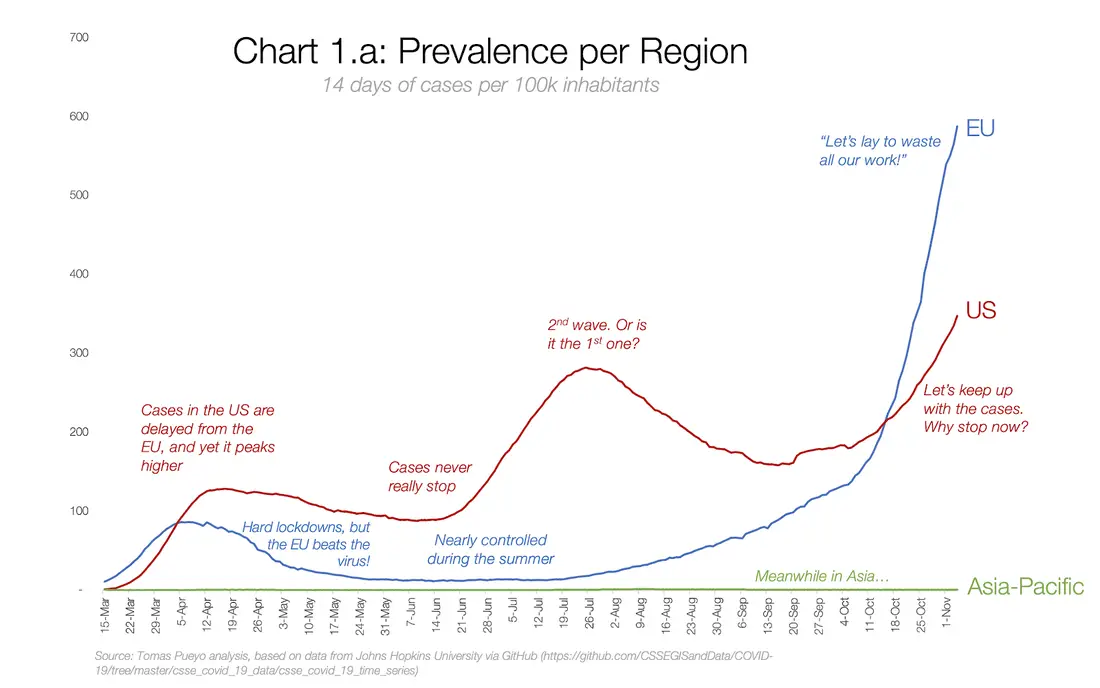


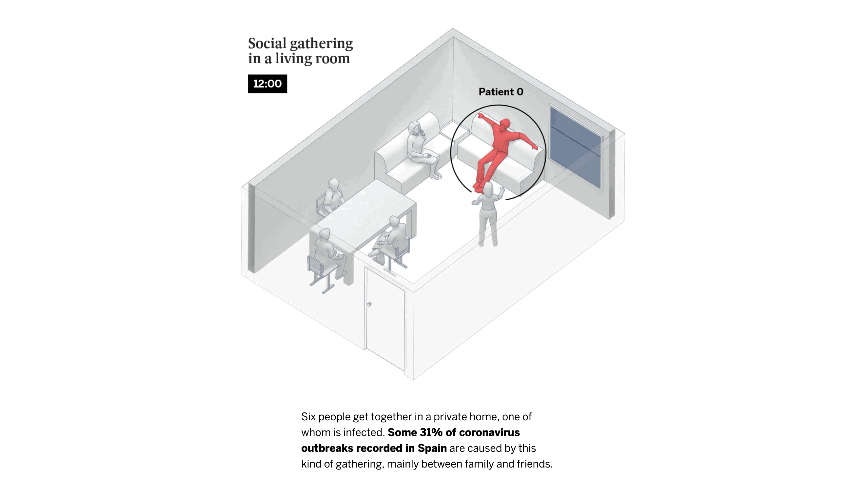
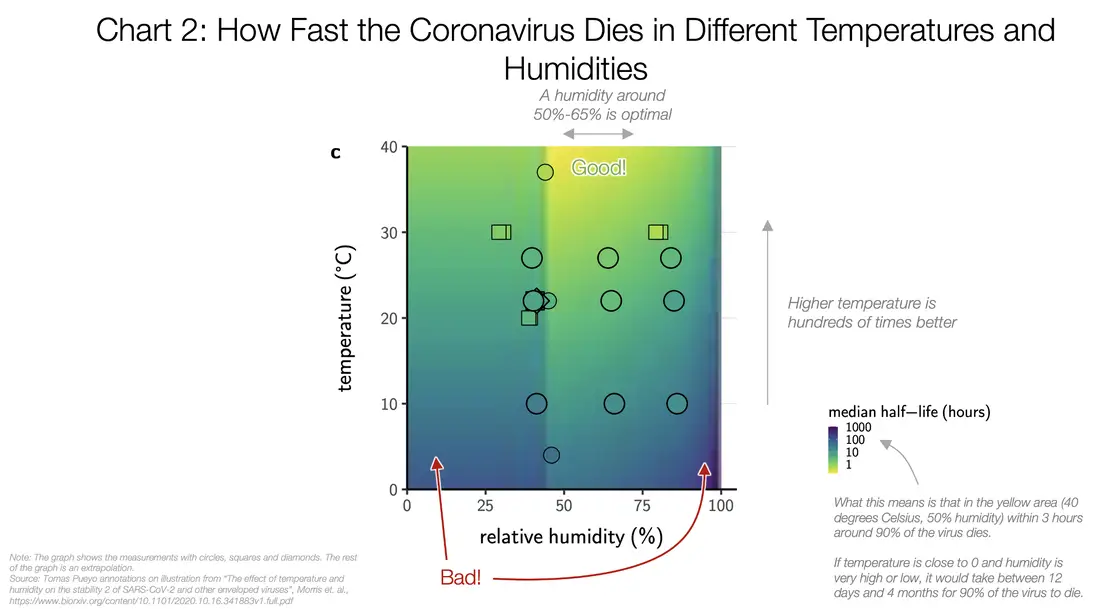
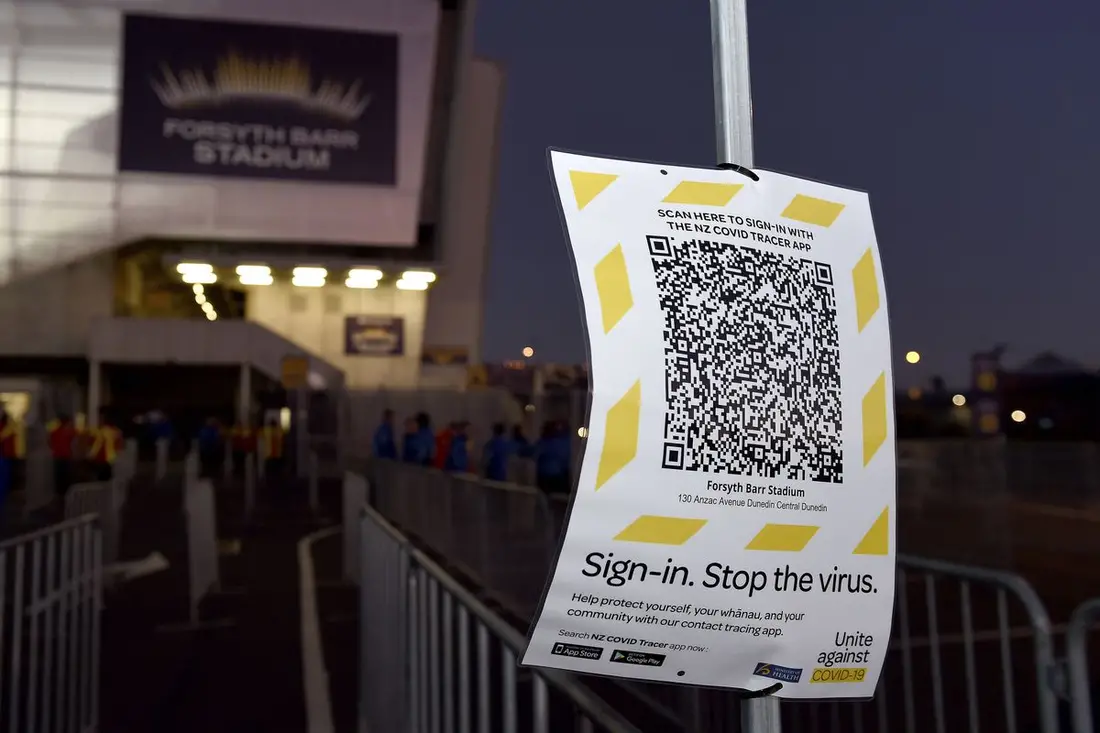

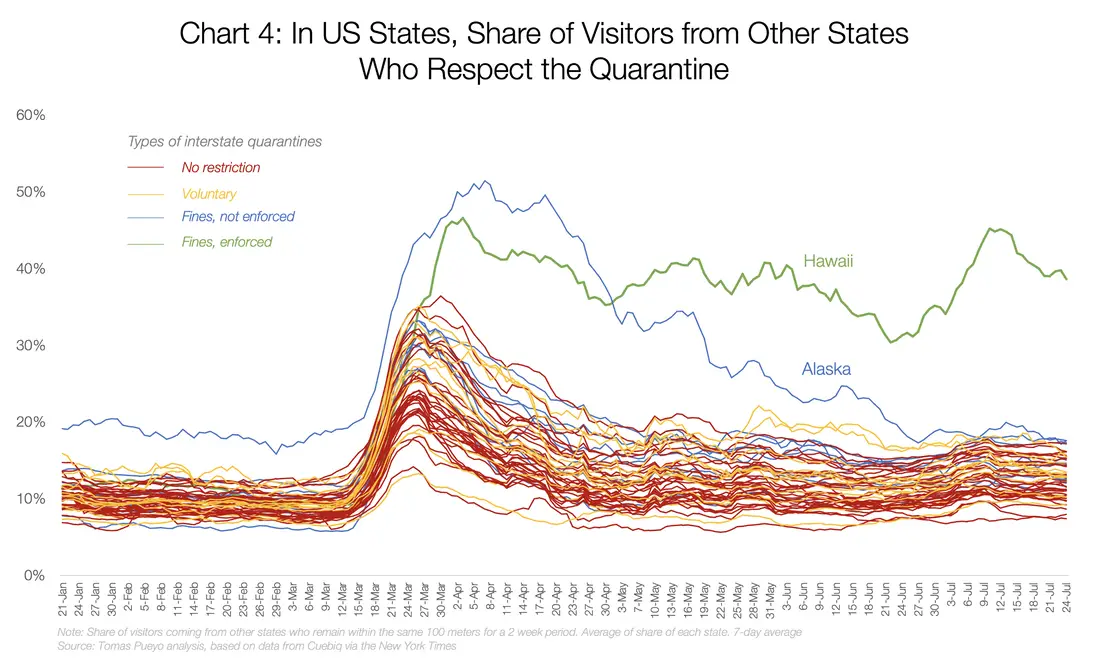




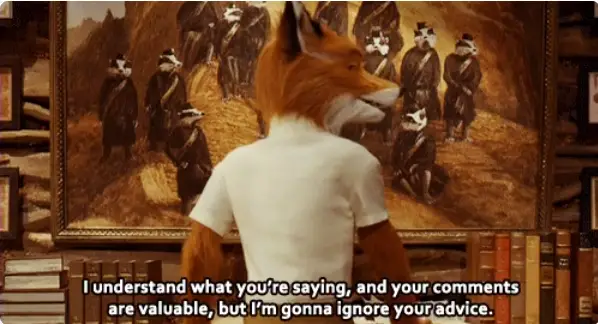
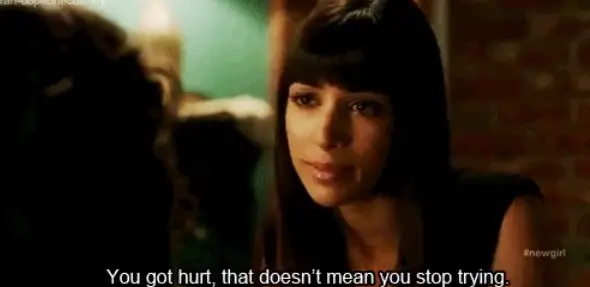

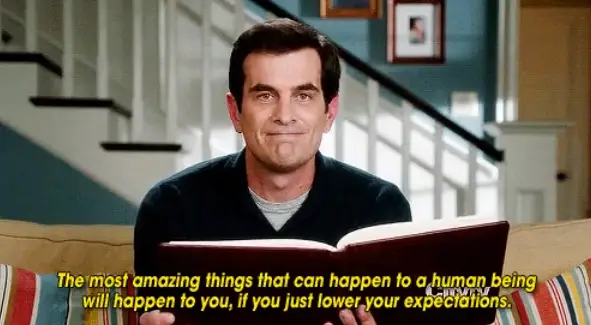

 RSS Feed
RSS Feed






